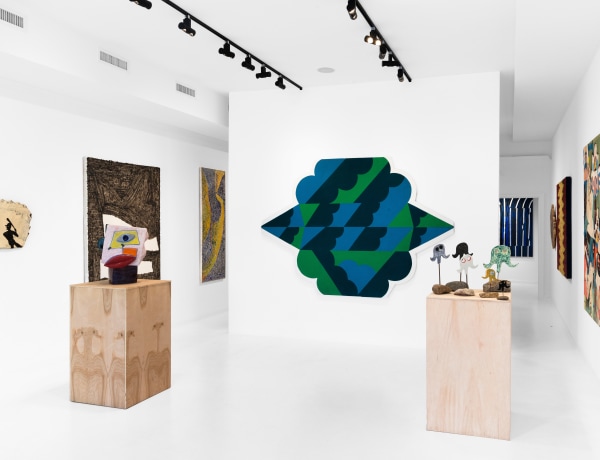
B. London, UK
Uday Dhar is an artist who explores identity through materials and subject matter sourced from the Indian subcontinent and New York. Dhar was born in Britain and raised in India before immigrating to the United States. The artist’s hybrid identity, as American, South Asian, and queer, has influenced his interest in the tension between self-expression and cultural heritage. His artistic projects are based on personal experience and also serve as a commentary on the larger cultural transformations that are taking place in the United States and in India.
Dhar studied architecture at Columbia University, completing his BA in 1980, and his MA in 1983. He later attended Parsons School of Design and the School of Visual Arts. Dhar’s background in architecture continues to inform his practice. As though constructing the walls of a home, he paints on stone or handmade jute and clay slurries sealed with lime wash.
Moving to New York in the 1980s necessitated difficult acts of translation, both literal and symbolic, between Dhar and his family. His experimental painting style develops an idiosyncratic language, combining unconventional materials such as dung and flower petals. The artist’s layered and tactile paintings explore assimilation and adaptation, bridging the gap between social issues and unfettered imagination. The artist's commitment to the intersection of figuration and abstraction is the result of a bifurcated life in which seemingly opposing aspects of his identity collide and intertwine. Dhar’s oeuvre reflects this duality, spanning small works on paper inspired by the Japanese art of Netsuke to monumental encaustic paintings.
Dhar was involved with AIDS activism in the 1990s and became involved with Godzilla, the Asian American Arts Network. In 2006, Dhar received a grant from the Pollock-Krasner Foundation, and was a fellow of the MacDowell Colony and Yaddo. His works have been exhibited globally, including the African American Museum in Philadelphia, FLUX Art Fair in New York, the Schomburg Center for Black Culture in New York, and the Queens Museum.